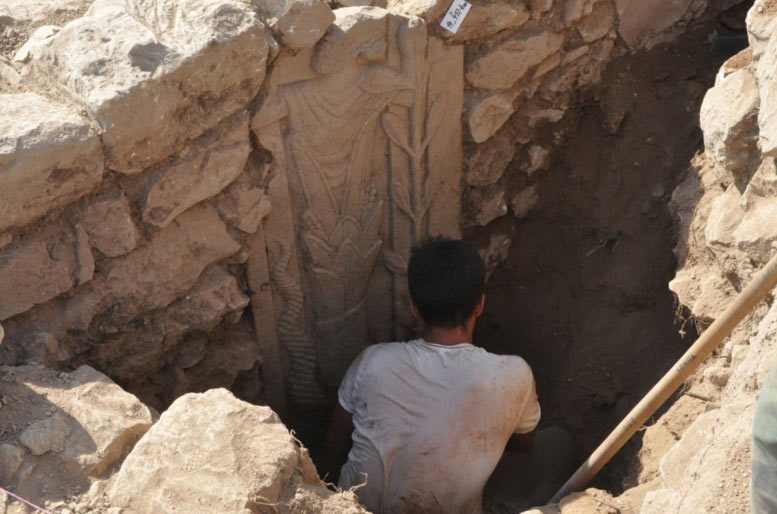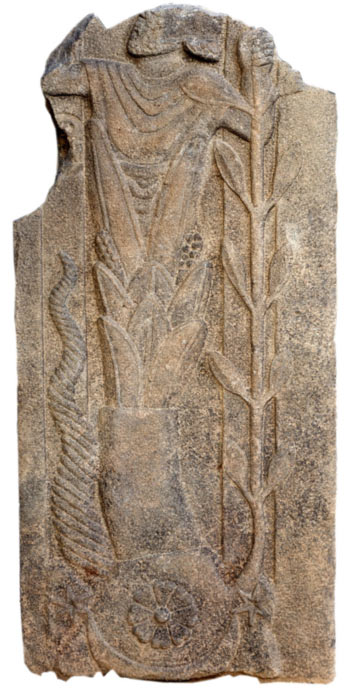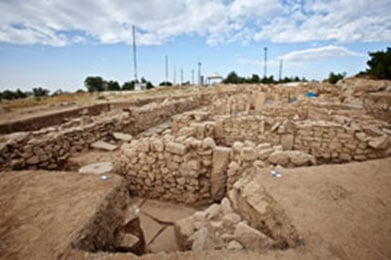WHERE Pressing SEE THE GREEK HISTORY
In light of unique mosaics in Zeugma ancient Hellenistic city in eastern Turkey
Even three unique mosaic art, and in excellent condition, unearthed by archaeologists in the city of Zeugma, in eastern Turkey. One mosaic depicts the Nine Muses, the second shows the Ocean and Tethys and the third a young man.
As he writes the Hurriyet Daily News, the place where it was found the mosaic floor with the Nine Muses named by archaeologists "House of Muses" . In the center is depicted around the Calliope and her sisters while clearly distinguish the names.
The presentation of the findings made solemn by the mayor of the city of Gaziantep, Fatma Sahin, and the head of the excavation team Koutalmis Gkiorkai. The issue got big dimensions in Turkish media, not only because of the importance of the findings, but also for her. ..aprosexia the guests at the event, having stepped undisturbed mosaics. Starts maintenance In statements to reporters, Gkiorkai stressed that the work of scientists will focus on the protection and maintenance of fifidoton and for this purpose will place a special shelter.
"We estimate that the ancient city had around 2,000-3,000 homes. Twenty-five of these structures remain under water. Research in 'House of the Muses' will be completed next year, "he said. According to him, the amount of funding the excavations at Zeugma indexed annually. However, from 2005 to date has been allocated approximately 7 million. Turkey pounds, almost 2.5 mil. Euro. The Zeugma Zeugma -which many have called "second Pompeii" - was founded in 300 BC by Seleucus I Nicator in, one of the successors of Alexander the Great, and prospered because of its location in the commercial Silk Road, near the banks of the Euphrates. In 2000 there was an international mobilization to not implement government projects and submerged ancient city in the waters of the Euphrates. The mobilization is not paid off and finally the Turkish government launched the dam Biretsik, so most of the ancient city to be covered by water.
As he writes the Hurriyet Daily News, the place where it was found the mosaic floor with the Nine Muses named by archaeologists "House of Muses" . In the center is depicted around the Calliope and her sisters while clearly distinguish the names.
(The Tethys and Ocean)
The presentation of the findings made solemn by the mayor of the city of Gaziantep, Fatma Sahin, and the head of the excavation team Koutalmis Gkiorkai. The issue got big dimensions in Turkish media, not only because of the importance of the findings, but also for her. ..aprosexia the guests at the event, having stepped undisturbed mosaics. Starts maintenance In statements to reporters, Gkiorkai stressed that the work of scientists will focus on the protection and maintenance of fifidoton and for this purpose will place a special shelter.
"We estimate that the ancient city had around 2,000-3,000 homes. Twenty-five of these structures remain under water. Research in 'House of the Muses' will be completed next year, "he said. According to him, the amount of funding the excavations at Zeugma indexed annually. However, from 2005 to date has been allocated approximately 7 million. Turkey pounds, almost 2.5 mil. Euro. The Zeugma Zeugma -which many have called "second Pompeii" - was founded in 300 BC by Seleucus I Nicator in, one of the successors of Alexander the Great, and prospered because of its location in the commercial Silk Road, near the banks of the Euphrates. In 2000 there was an international mobilization to not implement government projects and submerged ancient city in the waters of the Euphrates. The mobilization is not paid off and finally the Turkish government launched the dam Biretsik, so most of the ancient city to be covered by water.






